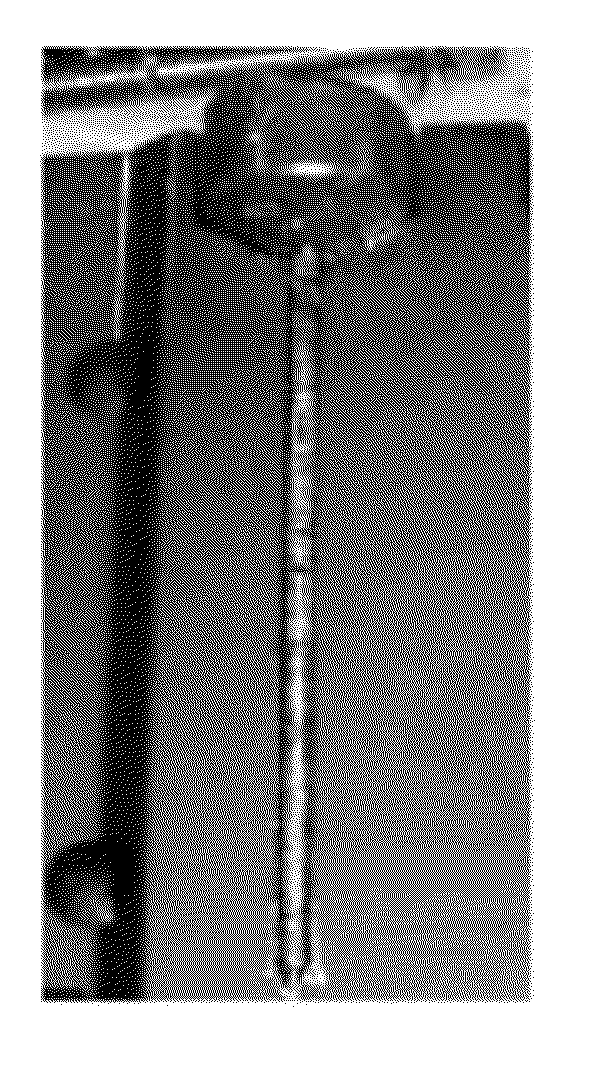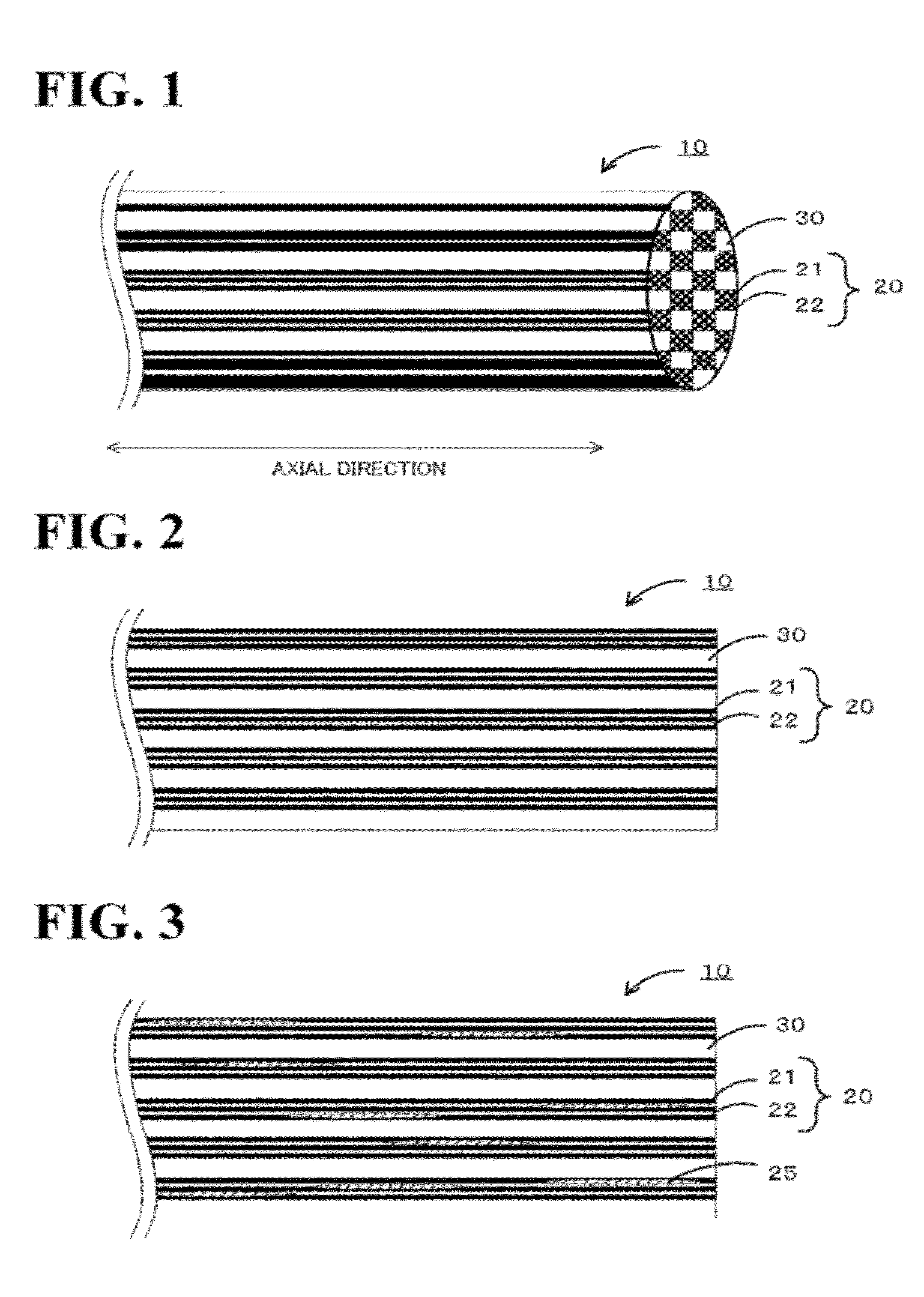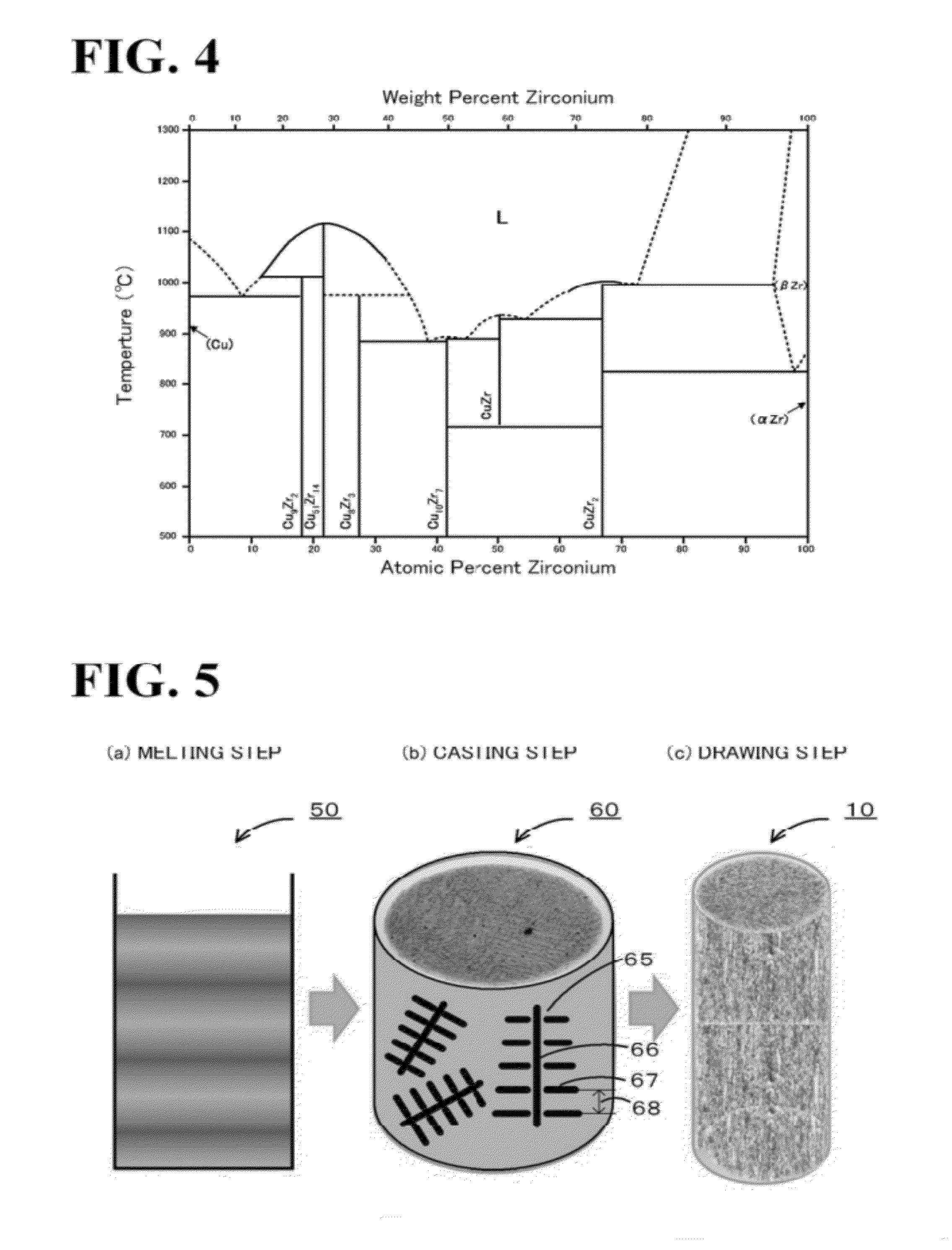Copper alloy wire and method for producing the same
a technology of copper alloy wire and copper alloy wire, which is applied in the direction of conductors, foundry patterns, and moulding apparatus, can solve the problems of insufficient ultimate tensile strength, and achieve the effect of increasing ultimate tensile strength
- Summary
- Abstract
- Description
- Claims
- Application Information
AI Technical Summary
Benefits of technology
Problems solved by technology
Method used
Image
Examples
example 1
[0079]First, a copper-zirconium binary alloy containing 3.0 atomic percent of zirconium with the balance being copper was subjected to levitation melting in an argon gas atmosphere. Next, a pure copper mold having a round-bar-shaped cavity with a diameter of 3 mm was coated, and the melt of about 1,200° C. was poured and cast into a round-bar ingot at about 1,200° C. The diameter of the ingot was determined to be 3 mm by measurement using a micrometer. FIG. 6 is a photograph of the round-bar ingot. Next, wire drawing was performed by passing the round-bar ingot, which had been cooled to room temperature, through 20 to 40 dies having gradually decreasing hole diameters at room temperature so that the diameter after the wire drawing was 0.300 mm, thus producing a wire of Example 1. During the process, the drawing speed was 20 m / min. The diameter of the copper alloy wire was determined to be 0.300 mm by measurement using a micrometer. FIG. 7 is a photograph of a diamond die used for dr...
examples 2 to 4
[0080]A wire of Example 2 was produced in the same manner as in Example 1 except that wire drawing was performed so that the diameter after the wire drawing was 0.100 mm. In addition, a wire of Example 3 was produced in the same manner as in Example 1 except that wire drawing was performed so that the diameter after the wire drawing was 0.040 mm. In addition, a wire of Example 4 was produced in the same manner as in Example 1 except that wire drawing was performed so that the diameter after the wire drawing was 0.010 mm.
examples 5 to 9
[0081]A wire of Example 5 was produced in the same manner as in Example 1 except that a copper-zirconium binary alloy containing 4.0 atomic percent of zirconium with the balance being copper was used. In addition, a wire of Example 6 was produced in the same manner as in Example 5 except that wire drawing was performed so that the diameter after the wire drawing was 0.100 mm. In addition, a wire of Example 7 was produced in the same manner as in Example 5 except that wire drawing was performed so that the diameter after the wire drawing was 0.040 mm. In addition, a wire of Example 8 was produced in the same manner as in Example 5 except that wire drawing was performed so that the diameter after the wire drawing was 0.010 mm. In addition, a wire of Example 9 was produced in the same manner as in Example 5 except that wire drawing was performed so that the diameter after the wire drawing was 0.008 mm.
PUM
| Property | Measurement | Unit |
|---|---|---|
| width | aaaaa | aaaaa |
| width | aaaaa | aaaaa |
| mean atomic number | aaaaa | aaaaa |
Abstract
Description
Claims
Application Information
 Login to View More
Login to View More - R&D
- Intellectual Property
- Life Sciences
- Materials
- Tech Scout
- Unparalleled Data Quality
- Higher Quality Content
- 60% Fewer Hallucinations
Browse by: Latest US Patents, China's latest patents, Technical Efficacy Thesaurus, Application Domain, Technology Topic, Popular Technical Reports.
© 2025 PatSnap. All rights reserved.Legal|Privacy policy|Modern Slavery Act Transparency Statement|Sitemap|About US| Contact US: help@patsnap.com



